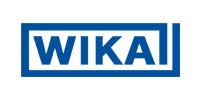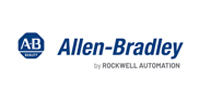Temperature Measuring Instrument
Wastewater Sewage
In wastewater and sewage treatment systems, industrial measuring instruments are critical for monitoring and controlling the processes that remove contaminants and treat water for safe discharge or reuse. These instruments help in ensuring efficiency, regulatory compliance, and environmental protection by measuring key parameters such as flow, pH, dissolved oxygen, turbidity, and more.
Here’s an overview of the main industrial measuring instruments used in wastewater and sewage systems:
1. Flow Meters
- Function: Measure the volume or rate of water flow in sewage systems and treatment plants.
- Applications: Used to monitor and control the inflow of wastewater, the flow between treatment stages, and the discharge of treated water.
- Types:
- Electromagnetic Flow Meters: Ideal for measuring the flow of conductive liquids like wastewater.
- Ultrasonic Flow Meters: Used for non-invasive, accurate flow measurement, particularly in large pipes.
- Vortex Flow Meters: Measure the flow of both liquids and gases in aeration systems.
2. pH Meters
- Function: Measure the acidity or alkalinity of wastewater.
- Applications: pH measurement is critical in the treatment process to ensure that chemical reactions, such as neutralization, occur effectively. Monitoring pH is important during biological treatment and before discharging water to ensure environmental compliance.
- Types:
- Online pH Meters: Provide continuous monitoring of pH in tanks and pipelines.
- Portable pH Meters: Used for spot-checking in various locations across the treatment facility.
3. Dissolved Oxygen (DO) Sensors
- Function: Measure the concentration of dissolved oxygen in the water.
- Applications: Dissolved oxygen is vital in aerobic biological treatment processes, where microorganisms break down organic pollutants. Monitoring DO levels ensures optimal conditions for bacterial growth and effective treatment.
- Types:
- Optical DO Sensors: Offer high accuracy and require less maintenance compared to electrochemical sensors.
- Electrochemical DO Sensors: Widely used in wastewater treatment for continuous monitoring in aeration basins.
4. Turbidity Meters
- Function: Measure the clarity of water by detecting suspended particles.
- Applications: Used to monitor the effectiveness of filtration, sedimentation, and clarification processes. High turbidity levels indicate poor filtration or contamination, so monitoring is critical in both primary and secondary treatment.
- Types:
- Laser-based Turbidity Meters: Provide precise particle detection.
- Optical Turbidity Sensors: Common in continuous monitoring of water quality.
5. Total Suspended Solids (TSS) Meters
- Function: Measure the concentration of suspended solids in wastewater.
- Applications: Used to assess the efficiency of sedimentation and filtration processes. Monitoring TSS is important for both process control and compliance with discharge regulations.
- Types:
- Optical TSS Sensors: Measure solids in real-time to optimize sludge management and water treatment processes.
- Gravimetric TSS Meters: Lab-based analysis for spot checks and calibration.
6. Chemical Oxygen Demand (COD) Analyzers
- Function: Measure the amount of oxygen required to chemically oxidize organic matter in wastewater.
- Applications: COD is a key parameter in assessing the amount of organic pollution in wastewater. It’s commonly monitored to evaluate the effectiveness of biological treatment processes and ensure compliance with environmental discharge standards.
- Types:
- Online COD Analyzers: Provide continuous monitoring of organic load in wastewater streams.
- Lab-based COD Analyzers: Used for detailed analysis of water samples.
7. Biological Oxygen Demand (BOD) Analyzers
- Function: Measure the amount of oxygen required by microorganisms to decompose organic material in water over a specific time period.
- Applications: BOD is a crucial indicator of the effectiveness of wastewater treatment processes, particularly biological treatment. Monitoring BOD helps ensure that the treated water meets regulatory discharge requirements.
- Types:
- Automatic BOD Analyzers: Provide efficient and reliable measurements in treatment plants.
- Manual BOD Testing Kits: Often used for lab testing of water samples.

8. Level Sensors
- Function: Monitor the liquid levels in tanks, clarifiers, and reservoirs.
- Applications: Level sensors are used to manage the flow of water and sludge through the treatment stages, control the operation of pumps, and prevent overflow in storage tanks.
- Types:
- Ultrasonic Level Sensors: Used for non-contact level measurement in tanks.
- Float-type Level Sensors: Common in simple wastewater applications.
- Radar Level Sensors: Provide high-precision level monitoring, even in harsh environments.
9. Conductivity Meters
- Function: Measure the electrical conductivity of water, which correlates to the concentration of dissolved salts and ions.
- Applications: Used to monitor water salinity and ionic content in wastewater treatment, particularly in desalination processes, industrial wastewater treatment, and monitoring water quality before discharge.
- Types:
- Two-electrode Conductivity Sensors: Common in wastewater applications for real-time monitoring.
- Inductive Conductivity Sensors: Suitable for higher conductivity ranges, particularly in industrial wastewater.
10. Ammonia and Nitrate Analyzers
- Function: Measure the concentration of ammonia and nitrates in wastewater.
- Applications: Used in the monitoring of nitrogen removal processes in wastewater treatment. Ammonia and nitrate levels are particularly important in biological nutrient removal systems.
- Types:
- Ion-selective Electrodes (ISE): Used for ammonia and nitrate measurement in real time.
- UV Nitrate Sensors: Provide continuous monitoring of nitrate concentration in water.
11. Sludge Density Meters
- Function: Measure the density or concentration of sludge in treatment processes.
- Applications: Used in sludge treatment, dewatering, and digestion to optimize sludge processing and reduce waste volumes.
- Types:
- Ultrasonic Sludge Density Meters: Provide real-time monitoring of sludge concentration.
- Optical Sludge Density Meters: Measure sludge density through light scattering.
12. Chlorine Analyzers
- Function: Measure the concentration of chlorine in treated water, ensuring proper disinfection.
- Applications: Used in wastewater disinfection processes to monitor the chlorine dose and ensure compliance with safety standards for water discharge or reuse.
- Types:
- Amperometric Chlorine Sensors: Provide continuous monitoring of chlorine levels in treated water.
- Colorimetric Chlorine Analyzers: Used for lab-based analysis or spot checks.
13. ORP (Oxidation-Reduction Potential) Sensors
- Function: Measure the oxidation or reduction potential of wastewater, indicating the tendency of the water to undergo oxidation or reduction reactions.
- Applications: ORP sensors are used to monitor disinfection efficiency (e.g., in chlorine systems) and ensure that the water has been treated adequately before discharge.
- Types:
- Inline ORP Sensors: Continuous monitoring in treatment tanks or pipelines.
- Portable ORP Meters: Used for on-site spot checks in various parts of the treatment system.
14. Gas Detectors
- Function: Detect hazardous gases such as methane, hydrogen sulfide, and carbon dioxide in treatment plants.
- Applications: Gas detectors are essential for worker safety in wastewater treatment plants, particularly in areas with anaerobic digesters, where dangerous gases may be present.
- Types:
- Electrochemical Gas Sensors: Detect toxic gases like hydrogen sulfide (H₂S).
- Infrared Gas Sensors: Used to detect methane (CH₄) and other hydrocarbons.
Conclusion
Industrial measuring instruments play a critical role in ensuring the efficiency and safety of wastewater and sewage treatment systems. Instruments such as flow meters, pH sensors, dissolved oxygen analyzers, and turbidity meters help operators monitor and control the various stages of treatment, ensuring the treated water meets environmental regulations. These instruments help optimize processes, reduce costs, and minimize environmental impacts, making them indispensable in modern wastewater management systems.













